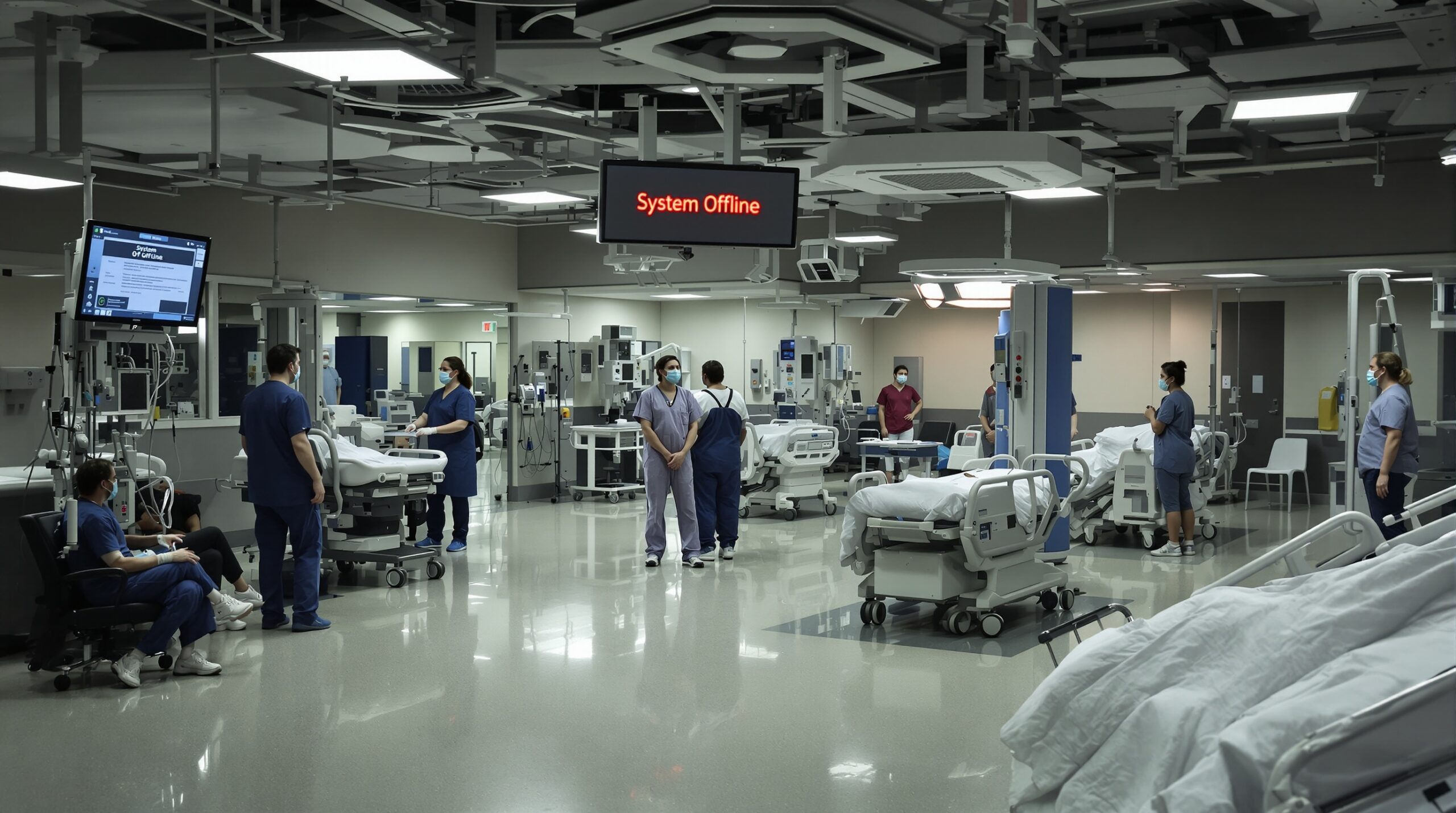A major hospital network suffered a crippling cyberattack last week, leading to widespread disruptions in critical operations. Patients faced delays in surgeries, diagnostics, and essential care. The incident highlighted growing vulnerabilities in healthcare technology systems. Staff scrambled to restore access but met with significant obstacles. As investigations unfold, experts urge urgent efforts to strengthen cybersecurity in the medical sector.
Scope and Impact of the Attack
The cyberattack targeted the central servers of the hospital network, which serves hundreds of thousands of patients annually. Key systems, including electronic medical records, scheduling, and billing, were rendered inaccessible. Staff could not retrieve crucial information for ongoing treatments and upcoming procedures. Without access to digital records, medical teams reverted to manual processes. This transition led to inevitable bottlenecks and confusion across various departments.
Consequently, most non-emergency surgeries faced postponement, with many patients forced to await rescheduling. Diagnostics, including blood tests and imaging, experienced significant delays. Outpatient appointments suffered cancellations, leaving patients uncertain about their ongoing treatments. The absence of timely information put vulnerable patients at increased risk. Staff morale also suffered as routine work became drastically more complicated and stressful.
Disruption to Surgeries and Patient Care
Operating rooms depend on automated schedules and digital patient histories to prepare for complex surgeries. After the attack, physicians received incomplete or outdated information, increasing the risk of errors. Medical equipment integrations normally streamline surgical prep and monitoring. With network communication down, these integrations failed, forcing teams to use less reliable manual methods. Surgeons, anesthesiologists, and nurses experienced delays at every step, from patient intake to post-operative care.
Life-saving procedures ran under strict protocols and backup systems, but some elective surgeries saw indefinite postponement. Patients expressed frustration and anxiety over unexpected waiting times. Staff worked overtime to inform families and review paper records, striving to ensure safety. The incident underscored how deeply hospital workflows depend on reliable digital infrastructure. Every department faced new challenges as they shifted back to pen-and-paper documentation.
Emergency Response and Recovery Efforts
The hospital immediately initiated its emergency cyberattack protocol. IT specialists isolated affected systems to contain further damage. Communication lines remained open between hospital leadership, law enforcement, and cybersecurity firms. Initial investigations revealed the attack likely originated via a sophisticated phishing email. Perpetrators exploited outdated security software to gain access and encrypt critical databases, demanding a ransom for restoration.
The hospital refused to pay the ransom, opting to work with authorities and restore systems using secured backups. Restoration efforts moved slowly, as each database required careful cleaning and validation before reactivation. Staff received extra training to identify signs of compromise and prevent future breaches. Meanwhile, external experts assessed the IT infrastructure for lingering vulnerabilities. The institution also notified patients and regulators, committing to transparency throughout the recovery period.
Patient Reactions and Communication Challenges
Patients reported mixed experiences during the network outage. Some appreciated honest updates and efforts to maintain care continuity. Others expressed disappointment over delayed treatments, fearing complications from interruptions. Hospital communication teams worked tirelessly to keep patients informed by telephone, sometimes calling hundreds daily. Staff set up temporary information desks in clinics and emergency rooms. They answered questions, rescheduled appointments, and provided guidance about ongoing care needs.
The incident sparked conversations about how much patients rely on accessible, digitized records. Many called for investment in secure, hybrid systems that blend digital convenience with manual fallback options. Hospital leaders committed to learning from the crisis, vowing to improve both their technical defenses and communication protocols. They acknowledged the essential role of clear, timely updates in maintaining public trust during disruptions.
Wider Implications for Healthcare Cybersecurity
This incident highlights a broader trend of cybercriminals targeting healthcare organizations. Hospitals store massive amounts of sensitive personal and financial data. Many rely on legacy systems that lack modern security features. As medical devices and records become more interconnected, the attack surface for criminals continues expanding. Experts warn that attacks on hospitals have life-or-death consequences, affecting patient care and safety.
In response, healthcare systems nationwide are reassessing their cybersecurity readiness. Many facilities now conduct regular penetration testing and staff training. Investments in advanced firewalls, endpoint protection, and data encryption are increasing. Industry leaders advocate for government support to help small hospitals implement robust safeguards. Policymakers are also considering stronger requirements for incident reporting and transparency after breaches.
Preventative Measures and Future Strategies
Technology experts recommend several steps to mitigate future attacks. Routine installation of security updates can close known vulnerabilities. Rigorous staff training is critical, since human error remains a leading entry point for hackers. Hospitals are encouraged to segment sensitive databases, limiting the impact of any single breach. Backups must be maintained and regularly tested for integrity and recovery speed.
Cybersecurity frameworks, such as those from the National Institute of Standards and Technology (NIST), provide hospitals with structured guidance. Regular security audits identify emerging threats and highlight where investment is most needed. Collaboration with third-party experts offers specialized knowledge that in-house IT teams may lack. Ultimately, hospital boards must view cybersecurity as a core patient safety issue, not merely a technical one.
Lessons Learned and Looking Ahead
This cyberattack serves as a powerful reminder of technology’s double-edged role in modern medicine. Digital tools enhance efficiency, accuracy, and access to care. However, without robust safeguards, they also carry significant risks. As hospitals rebuild from this ordeal, many pledge to invest more aggressively in both prevention and response capabilities. Staff education and patient communication are growing priorities for institutions nationwide.
Patients, providers, and policymakers must work together to protect the integrity of healthcare IT systems. By learning from this incident and sharing best practices, the medical community can better resist future attacks. Ultimately, resilient digital infrastructure is essential for ensuring safe, timely patient care in an increasingly connected world.

